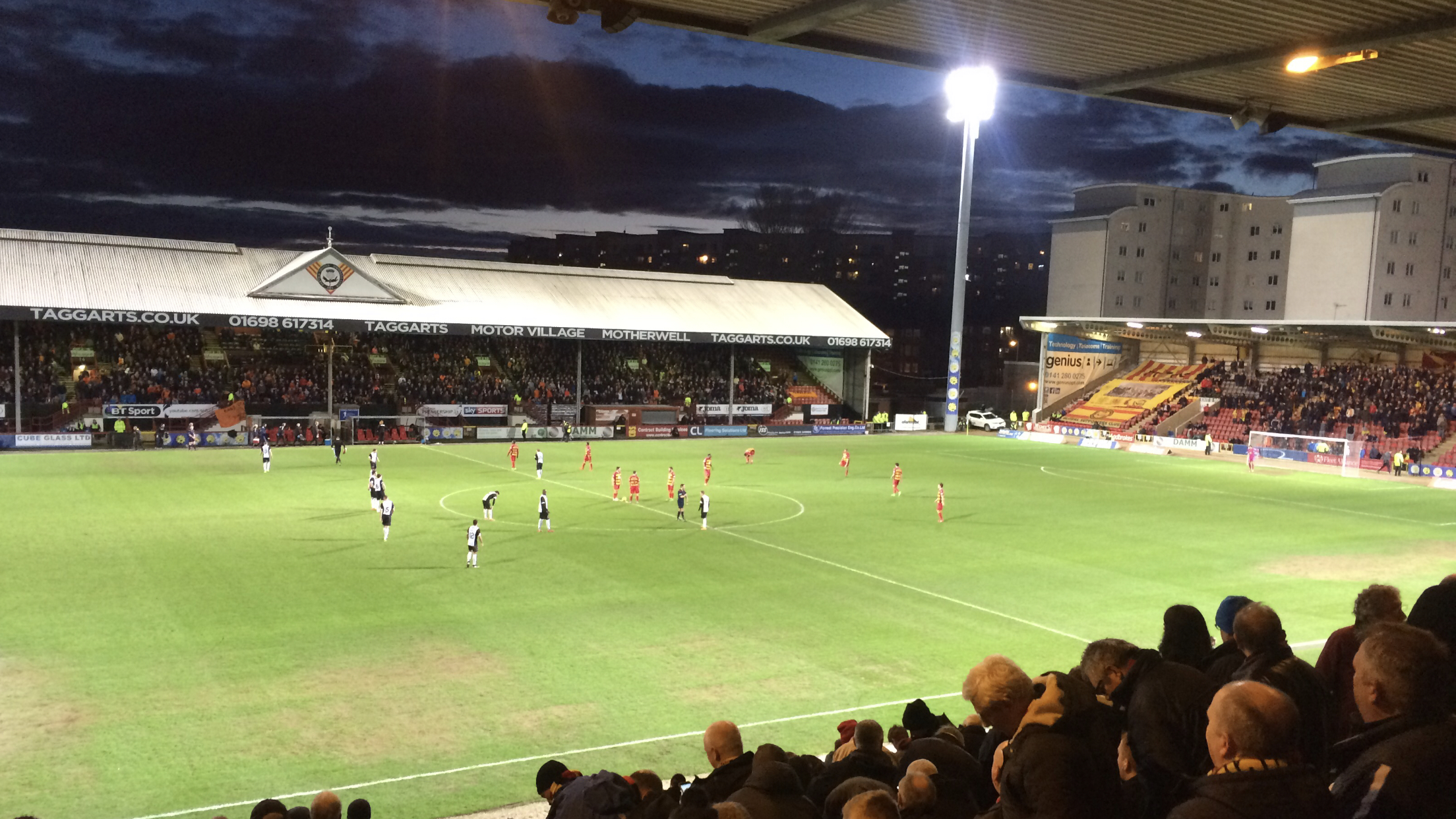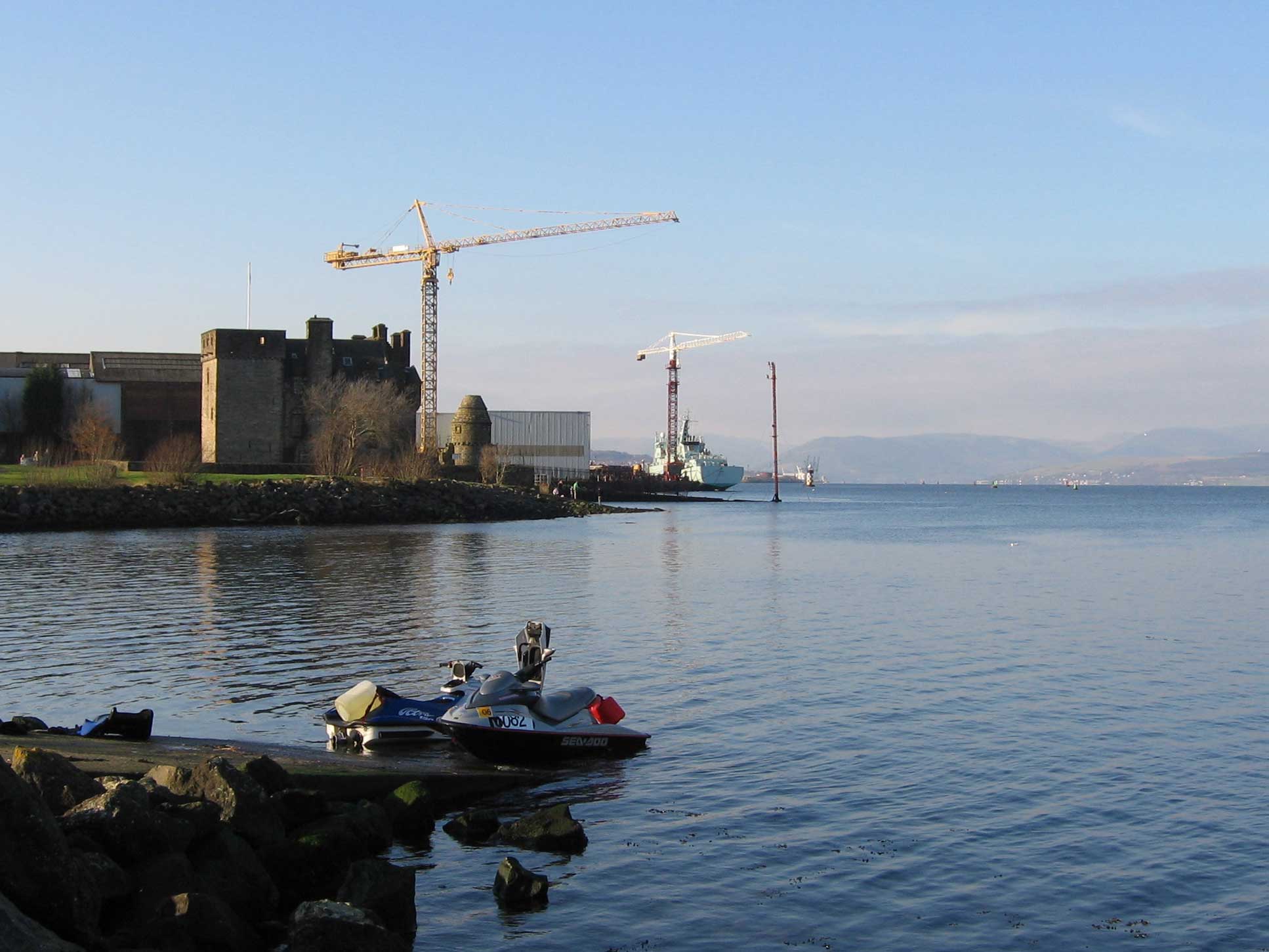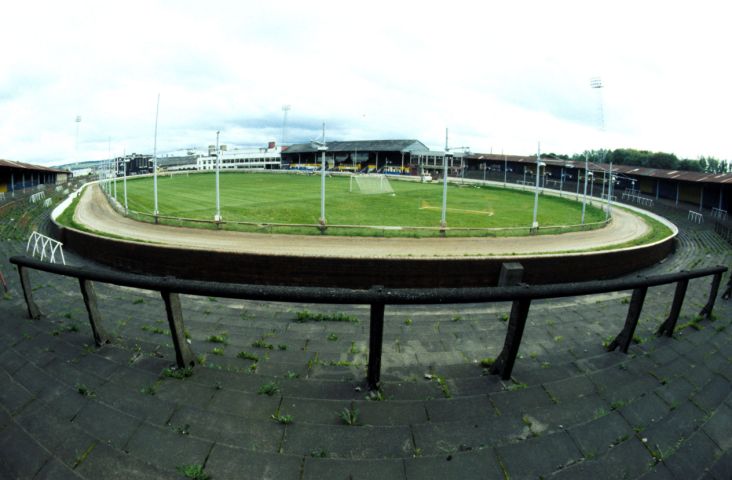|
Meadowside
Meadowside was a football ground in the Partick area of Glasgow, Scotland. It was the home ground of Partick Thistle from 1897 until 1908. History Partick Thistle moved to Meadowside from Inchview Park (Whiteinch) in 1897, the year they were first promoted to Scottish Football League Division One. The ground was slowly developed and eventually included of a 750-seat grandstand on the northern side of the pitch and a running track around it. On 16 December 1899 the ground was used by Rangers for a home match against St Mirren as their new Ibrox Stadium was not ready.Paul Smith & Shirley Smith (2005) ''The Ultimate Directory of English & Scottish Football League Grounds Second Edition 1888–2005'', Yore Publications, p197 The ground's probable record attendance of 16,000 was set for a Scottish Cup first round replay against Hibernian on 4 February 1905, with Thistle winning 4–2. Another crowd of 16,000 attended a Glasgow Cup first round match against Celtic on 8 September ... [...More Info...] [...Related Items...] OR: [Wikipedia] [Google] [Baidu] |
Meadowside Granary
Meadowside Granary was a complex of four interlinked granary buildings situated on the north bank of the River Clyde in the Partick area of Glasgow, Scotland. Constructed in four phases between 1911 and 1967, the finished construction was the largest brick building in Europe at the time. The granary closed in 1988 and was demolished in 2002; the site is now occupied by part of the Glasgow Harbour development. History The first Meadowside Granary was a thirteen-storey, thirteen-bay brick building. Both it and the adjacent Meadowside Quay were built by Glasgow engineer William Alston for the Clyde Navigation Trust between 1911 and 1913. The site, on the north bank of the River Clyde at Castlebank Street, Partick, was formerly Meadowside football ground, which had been the home of Partick Thistle F.C. from 1897 until 1908. During construction, damage was caused by a severe storm on 27 November 1912 that blew down four cranes at the site. After opening, Meadowside became the most impo ... [...More Info...] [...Related Items...] OR: [Wikipedia] [Google] [Baidu] |
Inchview
Inchview was a football ground in the Whiteinch area of Glasgow, Scotland. It was the home ground of Partick F.C. from the 1870s until 1885, and of Partick Thistle from 1885 until 1897. History Partick FC Partick F.C. were formed in 1875, with their ground listed as 'Whiteinch' which they were still in the process of developing – it appears this was the same place as Inchview, which was located in that districtOrdnance Survey 25 inch Scotland, 1892-1905 Explore georeferenced maps () (the ground name, taken from a neighbouring villa off Dumbarton Road, would have derived from the former status of ... [...More Info...] [...Related Items...] OR: [Wikipedia] [Google] [Baidu] |
Glasgow Harbour
Glasgow Harbour is an urban regeneration scheme at Partick in the West End of the city of Glasgow, Scotland. Construction After many years of dereliction caused by the decline of shipbuilding and the migration of Glasgow's docks to the Firth of Clyde, since the mid-1980s the banks of the River Clyde at Glasgow have become a focus for property developers. Mirroring the London Docklands scheme, the old docks, and sites of old granaries, wharves and shipyards in Glasgow are being redeveloped into up-market residential apartments, office complexes and leisure facilities. The earliest developments were the Scottish Exhibition and Conference Centre (SECC) at the former Queen's Dock in 1985, and the Glasgow Garden Festival at the former Prince's Dock in 1988, which demonstrated the potential of the riverside area as a catalyst for urban regeneration. Through the 1990s, riverside apartment buildings began to appear at Lancefield Quay on the North bank and the former General Terminus Qu ... [...More Info...] [...Related Items...] OR: [Wikipedia] [Google] [Baidu] |
Partick Thistle F
Partick ( sco, Pairtick, Scottish Gaelic: ''Partaig'') is an area of Glasgow on the north bank of the River Clyde, just across from Govan. To the west lies Whiteinch, to the east Yorkhill and Kelvingrove Park (across the River Kelvin), and to the north Broomhill, Hyndland, Dowanhill, Hillhead, areas which form part of the West End of Glasgow. Partick was a Police burgh from 1852 until 1912 when it was incorporated into the city.Second City of The Empire: 1830s to 1914 from theglasgowstory.com. Retrieved 22 December 2011. Partick is the area of the city most connected with the , and several Gaelic agencies, such as the Gaelic Books Council ( |
Partick
Partick ( sco, Pairtick, Scottish Gaelic: ''Partaig'') is an area of Glasgow on the north bank of the River Clyde, just across from Govan. To the west lies Whiteinch, to the east Yorkhill and Kelvingrove Park (across the River Kelvin), and to the north Broomhill, Glasgow, Broomhill, Hyndland, Dowanhill, Hillhead, areas which form part of the Glasgow#West End, West End of Glasgow. Partick was a Police burgh from 1852 until 1912 when it was incorporated into the city.Second City of The Empire: 1830s to 1914 from theglasgowstory.com. Retrieved 22 December 2011. Partick is the area of the city most connected with the Scottish Highlands, Highlands, and several Gaelic agencies, such as the Gaelic Books Council (Scottish Gaelic: ''Comhairle nan Leabhraichean'') are located in the area. [...More Info...] [...Related Items...] OR: [Wikipedia] [Google] [Baidu] |
Clyde Port Authority
The Peel Group is a British infrastructure and property investment business, based in Greater Manchester, Manchester. In 2022, its Peel Land and Property estate extends to of buildings, and over of land and water. Peel retains minority stakes in its former ports business and MediaCityUK. The Trafford Centre, which opened in 1998, is widely regarded as Peel's landmark development. It was sold in 2011 to Intu, Capital Shopping Centres for £1.6 billion, making it then the most expensive acquisition in British property history. £700 million of the consideration was in Share (finance), shares and Peel continued to buy shares in the purchaser that went into administration (law), administration, eliminating share value, in 2020. The Peel Group held a series of other substantial investments in Listing (finance), listed businesses including Land Securities, Land Securities Group plc and Pinewood Studios, Pinewood Shepperton plc, and in 2022 owns 14.1% of UK Coal, Harworth Group plc ... [...More Info...] [...Related Items...] OR: [Wikipedia] [Google] [Baidu] |
Clune Park
Clune Park was a football ground in Port Glasgow, Scotland. It was the home ground of Port Glasgow Athletic from 1881 until they folded in 1912, and also of Port Glasgow Athletic Juniors. History Port Glasgow Athletic moved to Clune Park in 1881, and built a covered stand on the southern side of the pitch and banking around the remainder.Paul Smith & Shirley Smith (2005) ''The Ultimate Directory of English & Scottish Football League Grounds Second Edition 1888–2005'', Yore Publications, p151 The club were founder members of Scottish Football League Division Two in 1893, and the first SFL match was played at Clune Park on 12 August that year, with Port Glasgow Athletic beating Northern 6–1. Greenock Morton were forced to play a home match at Clune Park on 30 December 1905 when their Cappielow Park ground was closed for a month after the referee was attacked following a home defeat to Rangers earlier in the month. The ground's record attendance was set on 10 March 1906 when ... [...More Info...] [...Related Items...] OR: [Wikipedia] [Google] [Baidu] |
Firhill Park
Firhill Stadium is a football and former rugby union, rugby league and greyhound racing stadium located in the Maryhill area of Glasgow, Scotland which has been the home of Partick Thistle since 1909. The stadium is commonly referred to as simply Firhill, although between September 2017 and September 2020 it was also known as The Energy Check Stadium at Firhill for sponsorship reasons. Past ground-sharing agreements have seen Firhill act as a temporary home for three other football clubs: Clyde, Hamilton Academical and Queen’s Park. It was also a venue for the 2000 Rugby League World Cup and the Glasgow Warriors rugby union team between 2007 and 2012. , the all-seated capacity of Firhill is . History Partick Thistle played at various sites between 1876 and 1891, including Kelvingrove, Jordanvale Park and Muir Park. The club settled at Meadowside, beside the River Clyde, in 1891. They were forced out of this site in 1908, however, to make way for a shipyard. The club found ... [...More Info...] [...Related Items...] OR: [Wikipedia] [Google] [Baidu] |
Port Glasgow
Port Glasgow ( gd, Port Ghlaschu, ) is the second-largest town in the Inverclyde council area of Scotland. The population according to the 1991 census for Port Glasgow was 19,426 persons and in the 2001 census was 16,617 persons. The most recent census in 2011 states that the population has declined to 15,414. It is located immediately to the east of Greenock and was previously a burgh in the county of Renfrewshire. Originally a fishing hamlet named Newark, Port Glasgow came about as a result of large ships being unable to navigate the shallow and meandering River Clyde to the centre of the city of Glasgow. As a result, it was formed as a remote port for Glasgow in 1668, and became known as 'New Port Glasgow', which was shortened to 'Port Glasgow' in 1775. Port Glasgow was home to dry docks and shipbuilding beginning in 1780. The town grew from the central area of the present town and thus many of the town's historic buildings and people are found here. Port Glasgow expanded up ... [...More Info...] [...Related Items...] OR: [Wikipedia] [Google] [Baidu] |
Aberdeen
Aberdeen (; sco, Aiberdeen ; gd, Obar Dheathain ; la, Aberdonia) is a city in North East Scotland, and is the third most populous city in the country. Aberdeen is one of Scotland's 32 local government council areas (as Aberdeen City), and has a population estimate of for the city of Aberdeen, and for the local council area making it the United Kingdom's 39th most populous built-up area. The city is northeast of Edinburgh and north of London, and is the northernmost major city in the United Kingdom. Aberdeen has a long, sandy coastline and features an oceanic climate, with cool summers and mild, rainy winters. During the mid-18th to mid-20th centuries, Aberdeen's buildings incorporated locally quarried grey granite, which may sparkle like silver because of its high mica content. Since the discovery of North Sea oil in 1969, Aberdeen has been known as the offshore oil capital of Europe. Based upon the discovery of prehistoric villages around the mouths of the rivers ... [...More Info...] [...Related Items...] OR: [Wikipedia] [Google] [Baidu] |
Rutherglen
Rutherglen (, sco, Ruglen, gd, An Ruadh-Ghleann) is a town in South Lanarkshire, Scotland, immediately south-east of the city of Glasgow, from its centre and directly south of the River Clyde. Having existed as a Lanarkshire burgh in its own right for more than 800 years, in 1975 Rutherglen lost its own local council and administratively became a component of the City of Glasgow (1975–1996), City of Glasgow District within the Strathclyde Local government areas of Scotland 1973–96, region (along with neighbouring Cambuslang). In 1996 the towns were reallocated to the South Lanarkshire Subdivisions of Scotland, council area.From a pawnbrokers to Parliament - Tommy McAvoy looks back on a career that too ... [...More Info...] [...Related Items...] OR: [Wikipedia] [Google] [Baidu] |
Shawfield Stadium
Shawfield Stadium is a closed greyhound racing, football and speedway venue in the Shawfield district of the town of Rutherglen, South Lanarkshire, Scotland, located close to the boundary with Glasgow. Originally a football ground, Shawfield was home to Clyde F.C. from 1898 to 1986. Greyhound racing was introduced in 1932, and the stadium hosted the Scottish Greyhound Derby from 1970 to 1985 and from 1989 to 2019. The Glasgow Tigers speedway team were also based there, from 1988 to 1995 and 1997 to 1998, with the Scottish Monarchs also racing there in 1996. Other sports including boxing and athletics were also staged at Shawfield. On 19 March 2020, an announcement was made to suspend racing because of the COVID-19 pandemic. In the following two years the majority of trainers moved their greyhounds to other venues as the track became derelict. During October 2022, the stadium's owner Billy King died, ending the likelihood of it ever reopening. Greyhound Racing Competitions ... [...More Info...] [...Related Items...] OR: [Wikipedia] [Google] [Baidu] |
_-_geograph.org.uk_-_1035489.jpg)

.jpg)





